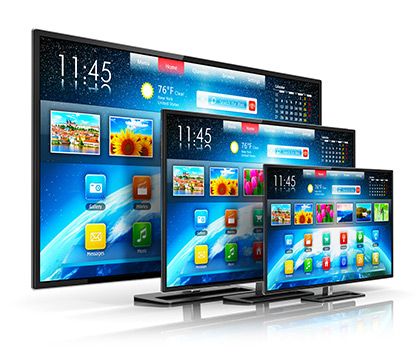When it comes to the size of your television, you have more options now than at any time in history. That feels overwhelming for some people, but it doesn't have to be when you consider a few important points. If you like a big screen, you can probably purchase something that is even larger than you had in mind.
How Much Prominence Should the TV Have?
Before you make a final buying decision, try to visualize how the TV will look in the room where you want to place it. Is it so large that furniture and other things in the room are barely noticeable? If so, you don't automatically have to downgrade to a smaller television. It's all a matter of taste, and something that you should agree on with others who live with you. Another important factor in choosing screen size is knowing how far away you plan to sit from it. You don't want to be so close that images are distorted, but being too far away somewhat defeats the purpose of buying a large-screen TV in the first place.

Sitting Angle
For a cinematic viewing experience, try to sit at a 40-degree angle from your TV set. To arrive at an optimal angle, measure the distance between your television and where you plan to sit by 0.84. That gives you an estimate on how large of a screen you should buy. Here are some examples of how this works in practice:
- 32 inch screen, viewing distance of 4.0 to 6.7 feet
- 50 inch screen, viewing distance of 6.3 to 10.0 feet
- 70 inch screen, viewing distance of 8.75 to 14.6 feet
- 84 inch screen, viewing distance of 10.5 to 17.5 feet
Keep in mind that these figures are a general guideline and you are free to change the placement of your TV and furniture at any time.
